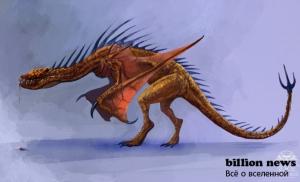External aggressions against Rus' chronology. Test: The struggle of Rus' against external aggression in the 13th century
The struggle of the Russian people against the German, Swedish and Danish feudal lords
The tornado of Batu’s invasion threw Rus' far back in its development, economic and cultural. tens of thousands of residents fell under the Horde sabers; others were taken captive on lassos, and they ended up in slave markets, in the service of their new masters.
Rus', with its tragic struggle and feat, saved Western Europe from a pogrom similar to what it itself suffered. When the Russian lands lay in ruins, there, far away, they continued to accumulate wealth and create masterpieces.
The appearance of the Germans in the eastern part of the Baltic dates back to the second half of the 12th century. At first they were merchants and Christian missionaries. Following them, crusading knights appeared, no longer striving to conquer new lands with the sword, rather than with the cross. The beginning of active German expansion in the Eastern Baltic is associated with the name of Bishop Albert. He founded the city of Riga at the mouth of the Dvina and brought many German colonists there.
Thanks to weapons and military tactics, relatively small detachments of German knights were able to achieve significant success in battles with the Baltic tribes. During the same period, the Swedes established themselves in Finland. Now the aggressors sought to cut off the Slavs from the sea and achieve complete control over the trade routes passing through the Baltic.
Russian-Swedish-German wars of the 13th century on the northwestern borders of Rus' can be divided into three stages. The first object of German expansion into the East Slavic lands was the city of Yuryev (now Tartu), founded by Yaroslav the Wise. Yuryev and its surroundings remained the last region of the Peipus land unconquered by the Germans. All Baltic residents who did not want to submit to the power of the crusaders found protection here. In August 1224 Yuryev was besieged by an army of German knights. The city was defended by 200 Russian soldiers led by Prince Vyachko, as well as local residents. It should be noted that the time for the attack was chosen well, since literally a year before, the armed forces of the ancient Russian principalities were defeated by the Mongols on the Kalka River in 1223. and even if they wanted to, they would not be able to organize a strong rebuff to the new aggressor.
Having besieged Yuryev, the crusaders built a wooden tower nearby, from which they fired at the fortress with stones, arrows and hot iron, trying to set fire to the fortress walls. But the city’s defenders did not give up and steadfastly repelled the onslaught.
In 1239 The Germans and Swedes began negotiations on joint actions against northern Rus', which they sought to conquer with a simultaneous bilateral onslaught from the west and north.
The Swedes were the first to launch a campaign against Novgorod. In July 1240 their army under the command of the son-in-law of the Swedish king, Jarl Birger (5 thousand people), on 100 ships, entered the Neva from the Gulf of Finland and camped near the Izhora River.
At dawn on July 15, 1240. The Russians, taking advantage of the fog, attacked the Swedish camp “in the rage of their courage.” According to legend, the warrior Pelgusius saw the holy martyrs Boris and Gleb sailing along the river in a boat to the aid of “their relative” Alexander. During the battle, Alexander fought with Birger and wounded him in the head with a spear. In a fierce battle, the Swedes were defeated and expelled from Russian borders. The death of many Swedes, according to the same legend, was attributed by the Russians to the help of the angelic army, since a significant number of corpses of foreigners were found where there was no battle. Three Swedish ships were sunk during the battle. The victory on the banks of the Neva brought Alexander Yaroslavich great fame and the honorary nickname Nevsky.
Ice battle. Almost simultaneously with the Swedes, in the summer of 1240. The Livonian Germans also went on the offensive. They took Izborsk by storm, defeating the Pskov army sent to help the Izborsk people. At dawn on April 5, 1242. A famous battle took place between the Russian squad and the army of the Livonian Order, which went down in history under the name “Battle of the Ice”. The striking force in the Order's army were the German crusading knights. The Battle of the Ice decided the outcome of the war, stopping the advance of the crusaders to the east. The Livonian Order was forced to make peace and abandon the captured Novgorod-Pskov territories.
The victories of Alexander Nevsky stopped the German-Swedish onslaught for ten years. In addition, they contributed to the rise of the war of liberation against foreign invaders in the Baltic states. So in 1242 A powerful Prussian uprising broke out against the crusaders, which lasted 11 years. Having suppressed the Prussian uprising, the knights resumed their attack on the Slavic lands. But it was no longer distinguished by its former pressure. The significance of Nevsky's victories had an impact. On the other hand, European knighthood had by that time suffered huge losses from the wars in the Middle East and the invasion of Batu. It could no longer unanimously respond to Rome’s calls to launch a new large-scale campaign against Rus', similar to the first crusades in Palestine.
Armed forces Ancient Rus' did not have a perfect military organization and rich military traditions, but they had strong discipline. Slavic warriors were distinguished by high fighting spirit and endurance. A major role in the war was played by the leader of the army - the prince, who, as a rule, led his warriors to heroism by personal example. The permanent core of the Slavic army, its regular part, was the princely cavalry squad.
The struggle of Rus' against external aggression in the 13th century
In the 13th century, the enemies who weakened the internal and external position of Rus' were the Mongol-Tatars. Characteristics of the Tatar army: foot and horse warriors, armed with a shield and bow and arrows. The army was organized according to the decimal principle: 10, 100, 1000, 10 thousand people (tumen). All units were shackled by strict discipline, with severe punishment for the slightest violation. The strength of the army was reconnaissance; before the start of the campaign, information about the enemy was collected. (survey of merchants). Tactics: ambushes, raids, deceptive maneuvers, undermining the city, military cunning. Having conquered part of India and China, the Mongols took their siege weapons. The Tatars used night and day armies. Under Genghis Khan, large territories were conquered. In the 20s In the 13th century, they knew nothing about the Mongol-Tatars in Rus'.
1223 - Battle of the Kalka River - the first meeting of Russians and Mongol-Tatars. The Polovtsians invited the Russian princes because they were afraid to fight the enemy alone. The Russians were not united in battle.
The Polovtsians immediately abandoned them. Some of the Russian princes entered the battle, others preferred to wait. The consequence was a severe defeat.
After the victory on the Kalka River, the Mongol-Tatars retreated to the east and the Russians forgot about them for some time. Batu Khan, the grandson of Genghis Khan, began a new campaign at the end of 1237. An army of 140 thousand, passing through the Mordovian forests, besieged Ryazan. The Ryazan prince turned to his neighbors for help, but did not receive it. Ryazan itself bore the brunt of the blow. Irritated by the unprecedented tenacity of the defenders, Batu Khan ordered the complete destruction of the city. After a six-day siege and a brutal assault, Ryazan fell. The invaders mercilessly dealt with the inhabitants and destroyed the city. Batu's hordes moved deep into North-Eastern Rus'.
In the battle of Kolomna, the Russian squads were again defeated, then Batu’s army captured stubbornly defending Moscow.
During February 1238, the invaders turned into ruins 14 Russian cities between the Oka and Volga rivers, including the Vladimir-Suzdal land. Thousands of people died, thousands of others were taken prisoner, and the remnants of the population took refuge in the forests. The fire destroyed many manuscripts and frescoes. March 1238 there was a battle on the Sit River, where Grand Duke Vladimir Yuri Vsevolodich fought courageously along with a small army. The Battle of the Sit River weakened the conquerors and they did not go further north. The Mongol-Tatars reached Torzhok, this small town defended itself for two weeks. From here the conquerors turned to the Southeast. When retreating to the steppe, they used their famous raid technique. They moved south in a wide front of small detachments, plundering everything in their path. They did not move to Novgorod due to heavy losses suffered during the winter campaign. But even on the way back, Batu’s army faced stubborn resistance. The town of Kozelsk held out until the last man for seven weeks before the conquerors managed to take it. In 1239, the enemy began a new campaign, now against Southern Rus'.
In 1240, after a siege and street fighting, Kyiv fell. Moving west, the conquerors invaded the Czech Republic, Hungary, and Germany, however, having met resistance and, already weakened during the fighting in Rus', they went back across the Volga. By the heroic resistance of the Russian people, Central and Western Europe was saved from the horrors of the Mongol-Tatar yoke and received the opportunity for
Further development of its economy. A new state was founded on the conquered territories - the Golden Horde.
Yoke-political (label) economic oppression (tribute, raids).
A new state, the Golden Horde, appears, the capital of Sarai-Batu. Consequences of the yoke: deepening feudal fragmentation, the struggle of princes for the throne, damage to the economy and culture of Rus'.
Rus' is far behind European countries in its development, but fortunately for the people
the conquerors did not settle in this territory.
The Mongol-Tatars delayed the development of the country, but could not stop it.
But the Mongol-Tatars were not the only enemies who weakened the internal and external position of Rus'. There were also enemies in the west - the Swedes and the Germans. The Vatican proclaimed a campaign of knights to the east with the goal of converting pagans to the true faith (Russians were also pagans for them). But in fact, they were attracted to new territories. The conquest of the Baltic states by the Swedes created a threat to the Russian lands (Novgorod and Pskov). The Russian troops were trained as well as the European knights, but there were not so many professional warriors (mostly during the war they collected militia). The formation of the Russian army-- (Man-center, Wings-flanks). Prince Alexander Yaroslavich gave orders to strengthen the fortresses of Ladoga, Korela, and the Novgorod Kremlin, and to train the princely squad and militias.
1240 - Novgorodians learned about the Swedes' campaign. Goal: the Swedes wanted to block the Russians’ access to the Baltic Sea and seize the route along the Neva. The Swedes wanted to capture the mouth of the Neva River and the city of Ladoga, capturing the route from the Varangians to the Greeks. According to the scheme: Swedes 100 ships - 5 thousand people, commander Jarl Birger. Prince Alexander, hastily gathering the militia and the princely squad, approached the Swedes' camp unnoticed. The Russians, by attacking the cavalry in the center of the Swedes' camp and bypassing the foot soldiers along the Neva, wanted to drive the enemy into a corner between the Neva and Izhora. Consequence: The Russians attacked suddenly, the location of the battle was successfully chosen, the coordination of the Russian cavalry and infantry, the heroism of the soldiers, the talent of Prince Alexander. Meaning: the victory eliminated the threat of enslavement of the Russian lands and the peoples of the Baltic states, Rus' retained access to the Baltic Sea.
Even earlier, the Germans captured Pskov, Kaporye, Izborsk. Formed in 1237 The Livonian Order, the support of the Vatican in Eastern Europe, began to seize Russian lands. Alexander Nevsky was in Pereyaslavl due to a quarrel with the boyars. The Novgorodians asked the prince to return to the city. Alexander Yaroslavich returns and carefully prepares for battle.
The Russians liberate Pskov and, pursuing the Germans, go to Lake Peipsi. The Battle of the Ice in 1242 according to the scheme: the Germans are in the shape of a wedge (a pig, with heavily armed knights at the edges).
Russians: Alexander Nevsky placed unprecedented militias in the center, cavalry on the flanks, that is, he strengthened the flanks. During the battle, the German “pig” tried to dismember the enemy with a wedge blow and then destroy him in parts. The heavily armed knights broke through the Russian formation, but could not withstand the flank attack.
Result of the battle: 1) Russian troops liberated the territory from the invaders,
2) The Novgorod and Pskov lands remained independent.
Prerequisites for the Tatar-Mongol conquest of Rus'
There was another – the most powerful invasion of nomads from the depths of Asia. At the end of the 12th century. The Mongolian state is formed. In 1206 Temujin was proclaimed great khan under the name Genghis Khan. Genghis Khan's troops conquered the vast territory of China, Central Asia, and Transcaucasia.
The first armed conflict in Rus' took place in 1223 on the river. Kalke. The troops of the Russian princes and Polovtsians were defeated.
Reasons for the Mongols' success:
An unprecedented concentration of all resources, a huge number of troops, skillful use of the resources of enslaved countries: replenishment of troops and the use of the most advanced military equipment, “especially Chinese (battering guns, incendiary shells);
High level of technical equipment (cavalry, the best bows in the world), military discipline, army organization, intelligence, psychological warfare;
Socio-political prerequisites: in most of the countries attacked, there is feudal fragmentation, discord, lack of unity and the will to fight.
Conquest of Rus'
In 1236, Batu (grandson of Genghis Khan) began his campaign to the West. In 1237 there was an invasion of Rus'. Mongol-Tatar troops captured the Ryazan principality and invaded the Vladimir principality. Prince Yuri of Vladimir refused to help Ryazan Principality, then he himself was defeated on the river. City. The path to Novgorod opened, but the Tatars, fearing the spring thaw, turned southeast to the Polovtsian steppes.
In the autumn of 1240 the campaign was resumed. Tatar troops attacked Southwestern Rus'. On December 6, 1240, after stubborn fighting, Kyiv fell.
The immediate results of the Tatar-Mongol invasions were unprecedented devastation of the country. Of the 74 cities, 49 were destroyed.
As a result of the resistance, Western Europe was saved. In 1242, Batu's troops suffered heavy losses in the Czech Republic and Hungary, as a result of which they abandoned further advance to the West.
Tatar-Mongol yoke, its consequences and assessment
For more than 200 years, Rus' was under foreign domination.
The situation of Rus' under the rule of the Mongols
In 1243, Batu founded the state of the Golden Horde in the Lower Volga with its capital in Sarai-Batu, which was considered a province (ulus) of the Great Mongol Empire with its center in Karakorum. Unlike China, Central Asia and Transcaucasia, the Russian principalities were not directly part of the Golden Horde and were in vassal dependence (i.e., the Mongol Khan was the supreme ruler who did not interfere in their internal life). The social and political structures that existed in them were preserved (maybe this was the result of heroic resistance): princely power, local feudal lords, spiritual foundations (Orthodoxy).
Pressure system:
The Khan gave the princes a label to reign (they had to go to the Horde to get it), their power was not inherited. He also approved the appointment of the metropolitan.
Everything is taxed ("Tatar exit"), except the church. For this purpose, population censuses (“numbers”) were carried out. A system of tax farming was introduced, and the excesses of tax farmers and the khan’s representatives, the “Baskaks,” flourished. After the uprisings of the 60s. They entrusted the collection of the tax to the princes themselves, who, of course, profited from it. One of the most difficult duties, the “blood tax,” was introduced: Russian youths were taken into the Mongol guard.
From time to time new “bloodlettings” and punitive campaigns were carried out.
Consequences of Mongol enslavement:
In addition to the terrible devastation negative consequences For political development: strengthening of feudal fragmentation, princely strife (the Mongols encouraged them).
Long-term consequences for the history of Russia: as a result of terrible ruin and long heavy oppression, a change in the place of Rus' in the world historical process occurred; this was the beginning of its long lag behind Western Europe, which they then tried to overcome more than once with enormous sacrifices, but, in essence, were not overcome and in the 20th century. At the time of the invasion, Rus' was one of the most developed countries.
By the time the Mongols were liberated from power, it was a distant, poor country, little known about in Europe.
Long-term political and psychological consequences: First of all, the cities were destroyed, which led to the fall of culture and contributed to a change for the worse in traditions and morals - mentality. "Great fear" passed down from generation to generation.
Some historians believe that it was from this time that such negative traits of the Russian national character began, such as submission to authority, disregard for human rights, i.e. “Eastern” features characteristic of Asian-despotic societies were formed. The opinion is also expressed that under the influence of the Mongols (and they, in turn, took this system from China), the very type of power in the Moscow state, the nature of its relations with society, was formed: the entire population was subjects, slaves of the supreme ruler (after all, even in the 17th century the noblest The boyars, when addressing the tsar, called themselves “slaves”). This was not in Western Europe And Kievan Rus.
Discussion marks:
Even N.M. Karamzin noted certain positive consequences of the Mongol yoke: the Russian principalities inevitably began to unite. The famous historian Lev Gumilyov (son of N. Gumilyov and A. Akhmatova) denied the usual assessments. In his opinion, the Mongol invasion was not so terrible (no worse than the princely strife), its horrors were exaggerated in the sources. In the first decades after the conquest, there was no “yoke”; rather, there was a mutually beneficial alliance: Rus' provided people and money (the “way out” was not so difficult), the Tatars helped in the fight against the Western danger. She was the most scary, because... the Mongols did not encroach on inner life or religion. The German crusaders in the Baltic states destroyed entire nations (Prussians) or Germanized them (destruction of the local elite, implantation of their culture). Only after adoption in the 11th century. In the Golden Horde of Islam, the attitude towards Rus' worsened. Most historians believe that Gumilyov’s version is not supported by known historical facts
The fight against Western aggression
In the 11th century, a long process of German conquest and colonization of the Baltic states began - “Drang nach Osten”. At the beginning of the 13th century. The Order of the Swordsmen was created. In 1234, the Grand Duke of Vladimir Yaroslav (father of Alexander Nevsky) defeated the crusaders and stopped their advance.
At the end of the 30s. The knights decided to take advantage of the Mongol invasion: the Order of the Sword and the Teutonic Order were united into the Livonian Order, an agreement between the Germans, Danes and Swedes on a joint campaign against Rus' took place. In 1240, the 18-year-old Novgorod prince Alexander Yaroslavich defeated the Swedes on the Neva. After this victory they began to call him Nevsky.
Strengthening the Livonian threat to Novgorod: the traitorous boyars surrendered Izborsk and Pskov, Alexander was temporarily expelled from Novgorod due to the intrigues of the boyars. Then he was invited again for the evening. On April 5, 1242, he inflicted a crushing defeat on the Germans in the Battle of Lake Peipus (“Battle of the Ice”).
Subsequent activities of Alexander Yaroslavich: in 1252–1263. Grand Duke Vladimir, in essence, political leader North-Eastern Rus'. He pursued a policy of compromise with the Mongols: he became a sworn brother Mongol Khan Berke and made various concessions in order to prevent new Mongol campaigns against Rus' and its further ruin. At the same time, it has been suggested that he did not give up the fight, perhaps the anti-Mongol uprisings of the 60s. were secretly prepared by him.
Assessments of Alexander Nevsky:
The most common assessment: Alexander Nevsky is great statesman, defender of Rus'. He is declared a saint. No wonder the day before Patriotic War The famous film by S. Eisenstein was shot. Now a number of authors note that his concessions to the Mongols were the only possible policy: it was necessary to save Rus' from destruction in the conditions of the enormous superiority of the Mongols, to protect themselves from the more terrible Western danger.
Recently, some publications believe that the fight against the West and the alliance with the Mongols was a mistake. The Western danger was not so great: in the entire Order there were only a few hundred knights, and there could be no talk of conquering Rus'. Concessions to the Mongols morally corrupted the Russian people (after all, Nevsky even suppressed anti-Mongol uprisings). It was necessary to resist desperately, and perhaps the enemy would have retreated, as in the Czech Republic and Hungary. It was not Alexander Nevsky who was right, but Daniil Galitsky, who tried, relying on the West, to resist the Mongols. The opinion was even expressed that refusing to fight the knights and submitting to the West would have a positive meaning: we would get rid of Asian despotism and already then enter European civilization. In fact, our prospects can be judged by the German colonization of the Baltic states.
I. Causes of aggression:
1. Rus' is weakened.
2. Interest in the rich lands of Northern Rus'.
3. The desire of the Roman Catholic Church to make Russians Catholics.
II. The peoples of the Baltic states in the 13th century.
III. Knights' invasion of the Baltics:
· 1201 – foundation of Riga by the Germans.
· 1202 – creation of the Order of the Swordsmen.
· 1219 – the Danes founded the city of Revel, a center of expansion in the Baltic states.
· 1237 - ____________________________
V. Alexander Nevsky (characteristics of personality and activity).
VI.  Battle of the Neva July 15, 1240
Battle of the Neva July 15, 1240
Scheme (stroke)
Meaning:
Swedish aggression to the East was stopped
· Russia retains access to the Baltic Sea
The goal of the Swedish invasion was to capture the mouth of the river. Neva and Ladoga, which made it possible to take possession of the most important section of the route “from the Varangians to the Greeks,” which was under the control of Novgorod the Great. Having received news of the appearance of the Swedes under the command of the son-in-law of King Eric XI Birger, the Novgorod prince Alexander Yaroslavich, without waiting for the arrival of all his forces, moved down the river. Volkhov went to Ladoga before the Swedes, where he was joined by a squad of Ladoga residents; by this time the Swedes with their allies (Norwegians and Finns) reached the mouth of the river. Izhora. Taking advantage of the fog, the Russians unexpectedly attacked the Swedish camp and defeated the enemy; Only the onset of darkness stopped the battle and allowed the remnants of Birger’s army, who was wounded by Alexander Yaroslavich, to escape. In N. b. Gavrila Oleksich, Zbyslav Yakunovich, Yakov Polochanin and others especially distinguished themselves. Prince Alexander Yaroslavich was nicknamed Nevsky for the leadership and courage shown in the battle. Military-political significance of N. b. was to prevent the threat of an enemy invasion from the north and to ensure the security of Russia's borders from Sweden.

Scheme (move).
Meaning
· weakened the power of the Livonian Order
· aggression against Rus' thwarted
· the independence of the Novgorod and Pskov lands was preserved
· an end was put to attempts to impose Catholicism on Rus'.
The defeat of the Swedes on the Neva did not completely eliminate the danger hanging over Russia. Already in the early autumn of 1240, the Livonian knights invaded the Novgorod possessions and occupied the city of Izborsk. Soon Pskov shared his fate. In the same autumn of 1240, the Livonians captured the southern approaches to Novgorod, invaded the lands adjacent to the Gulf of Finland and created the Koporye fortress here, where they left their garrison. This was an important bridgehead that made it possible to control the Novgorod trade routes along the Neva and plan further advance to the East. After this, the Livonian aggressors invaded the very center of the Novgorod possessions and captured the Novgorod suburb of Tesovo. In their raids they came within 30 kilometers of Novgorod. Neglecting past grievances, at the request of the Novgorodians, Alexander Nevsky returned to Novgorod at the end of 1240 and continued the fight against the invaders. The following year, he recaptured Koporye and Pskov from the knights, returning most of their western possessions to the Novgorodians. But the enemy was still strong and the decisive battle lay ahead.
In the spring of 1242, reconnaissance of the Livonian Order was sent from Dorpat (Yuryev) with the aim of testing the strength of the Russian troops. About 18 kilometers south of Dorpat, the order's reconnaissance detachment managed to defeat the Russian "dispersal" under the command of Domash Tverdislavich and Kerebet. This was a reconnaissance detachment moving ahead of A.N.’s troops. towards Dorpat. The surviving part of the detachment returned to the prince and reported to him about what had happened. The victory over a small detachment of Russians inspired the order's command. He developed a tendency to underestimate Russian forces and became convinced that they could be easily defeated. The Livonians decided to give battle to the Russians and for this they set out from Dorpat to the south with their main forces, as well as their allies, led by the master of the order himself. The main part of the troops consisted of knights clad in armor.
The “Battle of the Ice” began on the morning of April 11 (5), 1242. At sunrise, noticing a small detachment of Russian riflemen, the knightly “pig” rushed towards him. The riflemen took the brunt of the “iron regiment” and with courageous resistance significantly disrupted its advance. Still, the knights managed to break through the defensive formations of the Russian “chela”. A fierce hand-to-hand fight ensued. And at its very height, when the “pig” was completely drawn into the battle, at a signal from Alexander Nevsky, the regiments of the left and right hands hit its flanks with all their might. Not expecting the appearance of such Russian reinforcements, the knights were confused and, under their powerful blows, began to gradually retreat. And soon this retreat took on the character of a disorderly flight. Then suddenly, from behind cover, a cavalry ambush regiment rushed into battle. The Livonian troops suffered a crushing defeat.
The Russians drove them across the ice another 7 versts to the western shore of Lake Peipsi. 400 knights were destroyed and 50 were captured. Some of the Livonians drowned in the lake. Those who escaped from the encirclement were pursued by Russian cavalry, completing their defeat. Only those who were in the tail of the “pig” and were on horseback managed to escape: the master of the order, commanders and bishops.
The significance of the victory of Russian troops under the leadership of Prince Alexander Nevsky over the German “dog knights” was truly historical. The Order asked for peace. Peace was concluded on terms dictated by the Russians. The order's ambassadors solemnly renounced all encroachments on the Russian lands that were temporarily captured by the order. The movement of Western invaders into Rus' was stopped. The western borders of Rus', established after the Battle of the Ice, lasted for centuries. The Battle of the Ice has gone down in history as a remarkable example of military tactics and strategy. Skillful construction of the battle formation, clear organization of interaction between its individual parts, especially infantry and cavalry, constant reconnaissance and taking into account the enemy’s weaknesses when organizing the battle, correct choice of place and time, good organization of tactical pursuit, destruction of most of the superior enemy - all this determined the Russian military art as advanced in the world.
VIII. Reasons for Victory in the fight against Western aggression:
· training and military tactics of the Russian army
· a strong and united commander, his military leadership talent.
Dominion of the Horde in Rus'
As a result of the Mongol invasion of 1237-1241. Rus' was thrown back in its development by several decades. Many cities were destroyed, 49 of them to the ground, in 14 life never resumed, and 15 cities turned into villages. Entire craft specialties disappeared (the craftsmanship of grain and filigree was forever forgotten), hundreds of villages and hamlets were deserted. Many of those people who were spared by the Mongolian saber or lasso lived in the forests for several years after the invasion, fearing new devastation. The Mongols disrupted traditional trade routes, which resulted in a sharp reduction in foreign trade and led to the foreign political isolation of Rus'. From the 1240s Russian land found itself in political and economic dependence on the Golden Horde. The Tatar-Mongol yoke was established, which lasted for about two and a half centuries (1240-1480).
Political dependence was that the Karakoram khan became the supreme ruler of the Russian land, and from 1260. - Khan of the Golden Horde. The Russian princes lost their sovereignty and were obliged to travel to Sarai-Batu (the capital of the Golden Horde) in order to receive a label from the khan - a document confirming the right to reign. The first prince to receive the label was Yaroslav Vsevolodovich Vladimirsky (1243). At the same time, civil strife continued, which the Mongols often provoked themselves. They “traded” the grand-ducal thrones, organizing unique auctions, which, of course, contradicted the Russian traditions of succession to the throne. The khans humiliated, and sometimes tortured and even killed the princes. While “visiting the Khan”, Mikhail Vsevolodovich Chernigovsky and Mikhail Yaroslavich Tverskoy were tortured. Most likely, the Tatars also poisoned Grand Duke Alexander Yaroslavich Nevsky.
The Mongol yoke finally destroyed veche system. The exceptions were Novgorod and Pskov. In most lands, essentially monarchical princely power was established in appanages - hereditarily transferred possessions. It should be noted that the Russian princes gradually adopted the despotic methods of government that existed among the Mongols, and actively introduced them on Russian soil. From public life All democratic traditions and institutions were uprooted, and they were replaced by hypocritical admiration for authority. The Russian people got used to kneeling not only in church. By the way, the pagan Mongols tried not to offend the church, probably fearing the wrath of the “Russian gods.”
The Russian lands were not officially part of the Golden Horde, but permanent representatives of the khan's administration - the Baskaks ("pressors") - had to monitor the development of the situation in the "Zalessky ulus" and brutally suppress even the slightest anti-Mongol attacks on the part of the Russian people.
Rus' did not have the right to defend itself in the event of new predatory raids of the Horde; moreover, the princes were obliged to place part of their squads at the disposal of the khan at his first request.
Economic dependence consisted mainly in the Horde output (annually paid tribute). At first, tribute was collected by Bessermen - Muslim tax farmers. Subsequently, the Grand Duke of Vladimir began to collect the Horde exit, and the Baskaks began to control it. If earlier the unit of taxation was considered to be the plow and plow (ralo), now they have switched to the household principle. To determine the size of the tribute, the khans sent census takers to Rus', who conducted a population census (for the first time in 1257-1259). In addition to the exit, there was also a trade duty (tamga), food for the Horde ambassadors (honor). Only the church was exempt from taxes.
Multimedia simulator for the section “Specific Rus'. Fighting external aggression 12-13th century: “Working with cards.” Created based on the shareware program "easyQuizzy". To familiarize yourself, you should download the archive and install the program on your device.
“The struggle of Rus' against external aggression in the 13th century”
The struggle of Rus' against external aggression in the 13th century.
Key dates and events.
1223 – the first clash of Russian troops with Mongol-Tatar troops on the Kalka River (the Russians were defeated)
1236 – defeat of the Volga Bulgaria by the Mongol-Tatars
1237 – 1238 – Batu’s first campaign against Rus'
1239 – 1242 – Batu’s II campaign against Rus'
1240 – Battle of the Neva
1242 – Battle of the Ice on Lake Peipsi
1252 – 1263 – years of reign of Alexander Nevsky
Mongol-Tatar invasion and establishment of the yoke over Russia.
By the time the invasion of Russian territory began, the Mongol ruler Genghis Khan managed to conquer the tribes of the Buryats, Yakuts, the Jin Empire (China), Khorezm, Transcaucasia and began to threaten the territories controlled by the Polovtsian tribes. At this time, the Russian princes were on friendly terms with the Polovtsy, so the Polovtsy, together with the Russian princes, 1223 They put up a united army against the Mongols and, despite their numerical superiority, were defeated on the river. Kalke.
After the death of Genghis Khan in 1227 His empire, which had grown by this time, was divided among his sons. One of the conqueror's grandsons, Batu, led a trip to Europe (1235). Along the way, Volga Bulgaria was conquered and a number of tribes that lived in the neighborhood. IN 1237 Tatar troops appear at the borders of the river. Voronezh and begin a powerful attack on the southern lands of Rus'. Ryazan, Moscow, Rostov, Suzdal, and Vladimir were destroyed. On his first campaign against Rus', Batu was unable to reach Novgorod and his army turned back. The military invasion was resumed in 1239. The Mongols defeated the scattered forces of the Russian princes and took Murom, Chernigov, Pereyaslavl, and Kiev. Batu's army reached the Adriatic Sea and 1242 g. suddenly returned to the steppes, which was associated with the death of one of Genghis Khan’s sons, Ogedei. New elections for the Great Khan were coming up, and Batu considered participation in these elections more important than further advancement to the West. As a result, it was established over Russia yoke(dominance) of the Mongol-Tatars.
In the east of Rus', the Golden Horde was formed in 1243, public education led by Khan Batu. A system of relationships was established between the Horde and Russia, which was based on payment by the Russian princes tribute Tatars In addition, a system was determined for the approval of all Russian princes who were to receive in the Horde label, giving them the right to reign.
Consequences of the invasion:
Lagging behind Europe after 240 years of yoke
Population reduction, destruction of cities and villages
Vassal dependence on the Horde - tribute, labels, systematic raids
Reduction of cultivated area
Confirmation of autocratic power.
The struggle of northwestern Rus' against the aggression of Swedish and German knights.
Sweden, Baltics - goals → capture of new lands
→ spread of Catholicism
July 1240 – Battle of Neva.
The Swedes ascended the Neva with the goal of enveloping the Novgorod land with “pincers”: from the west - the Germans, from the north-west - the Swedes = lightning attack by Russian squads and the militia of Prince Alexander Yaroslavich = the Swedes were defeated.
Reasons for the defeat of the Swedes: the heroism of the Novgorod warriors, the talent of Alexander Nevsky (surprise, blocked the Swedes’ retreat to the ships, divided the enemy into pieces with infantry and cavalry).
Victory value: Novgorod concentrated all its forces against the German knights.
April 1242 – Ice battle.
The tactics of the knights with a wedge - a “pig” - to break through the Russian defenses, break them in parts.
Alexander Nevsky's tactics = encirclement of the enemy, the ice cannot withstand the heavily armed Germans.
Reasons for the Russian victory: Alexander Nevsky's talent: choosing a place for a decisive battle, knowledge of enemy tactics (pig formation), skillful deployment of the Russian army, the heroism of Russian soldiers.
Victory value: Novgorod and Pskov lands retained their independence. Preventing further invasion of Russian lands. Prince Alexander Nevsky canonized.
View document contents
“Feudal fragmentation of Kievan Rus in the 12th century”
Feudal fragmentation of Kievan Rus in the 12th centuries.
In the 12th century. on the territory of Rus' begins a period of political fragmentation, a natural historical stage in the development of feudalism.
The specific period is full of complex, contradictory processes. On the one hand, there was the flourishing and strengthening of individual lands, for example, Novgorod, Vladimir, on the other hand, there was a clear weakening of the overall military potential, the increasing fragmentation of the princely possessions. If in the middle of the 12th century. There were 15 states in Rus' at the beginning of the 13th century. - about 50, then in the 14th century, when the process of consolidation had already begun, the number of states reached 250.
The real power of the Kyiv princes already in the middle of the 12th century. limited to the borders of Kyiv itself. The attempt of Yaropolk, who became the prince of Kyiv after the death of Mstislav, to arbitrarily dispose of the “fatherland” of other princes was decisively stopped. Despite the loss of all-Russian significance by Kiev, the struggle for its possession continued until the Mongol invasion. The Kiev table passed from hand to hand depending on the balance of power between the rival princely and boyar factions. Soon the rulers of the strongest principalities, who had become “great” in their lands, began to place dependent princes - “subordinates” - on the Kiev table. The strife turned the Kyiv land into an arena of frequent military operations, as a result of which cities and villages were ruined and the population was driven into captivity. All this predetermined the gradual decline of Kyiv.
Reasons for feudal fragmentation:
Dominance of subsistence farming;
Lack of strong economic ties between different parts of Kievan Rus;
Features of the transfer of princely power not from father to son, but to the eldest in the family, division of territory between the heirs;
Civil strife between princes;
Growth of cities;
Weakening of central power, i.e. Prince of Kyiv;
Strengthening the administrative apparatus in each feudal estate;
The growth of economic and political independence of local princely dynasties, the growth of political separatism;
The development of large land ownership, the active development of crafts, the complication of the social structure, the emergence of the nobility;
Loss to Kyiv historical role in connection with the movement of trade routes from Europe to the East.
In 1097, the Lyubechsky Congress established: “let each one maintain his own fatherland.” It was a transition to a new one political system.
Among the most famous new formations stood out: Vladimir-Suzdal, Galicia-Volyn, Kiev, Polotsk, Smolensk, Chernigov principalities, as well as the boyar republics: Novgorod and Pskov, which separated from it somewhat later.
A feature of the new era was that in the named entities, as they continued their economic and political development, the process of fragmentation and the allocation of new possessions and appanages did not stop.
Consequences of feudal fragmentation:
The rise of the economy and culture of individual principalities and lands;
Division of principalities between heirs;
Conflicts between princes and local boyars;
Weakening of Rus''s defense capability.
Of the feudal formations into which the Old Russian state broke up, the most noticeable in terms of power and influence on all-Russian affairs were: the Vladimir-Suzdal principality, Galicia-Volyn Principality and Novgorod land.
Vladimir-Suzdal Principality occupied the territory between the Oka and Volga rivers, covered by forests from Polovtsian raids. The population moved here in droves from the southern principalities bordering the steppe. In the XII - XIII centuries. The Rostov-Suzdal land experienced an economic and political upsurge, which propelled it into the ranks of the strongest principalities of Rus'. The cities of Dmitrov, Kostroma, Tver, Nizhny Novgorod, Gorodets, Galich, Starodub and others arose. In 1108, Vladimir Monomakh founded the city of Vladimir on the Klyazma River, which later became the capital of all North-Eastern Rus'. The political importance of the Rostov-Suzdal land increases sharply under Yuri Dolgoruky (1125-1157). In 1147, Moscow was first mentioned in the chronicle - a small border town founded Yuri Dolgoruky.
Dolgoruky conducted an active foreign policy, subjugated Ryazan and Murom to his power, organized several campaigns against Kyiv. This policy was continued by his son Andrey Bogolyubsky(1157-1174), which started the struggle Suzdal princes for political supremacy over the rest of the Russian lands. In internal affairs, relying on the support of the townspeople and warriors, Andrei dealt harshly with the rebellious boyars, expelled them from the principality, and confiscated their estates. To strengthen his position, he moved the capital from the ancient citadel of Rostov to Vladimir, a young city with a significant trade and craft district. After the successful campaign against Kyiv in 1169, the role of the political center of Rus' passed to Vladimir.
The discontent of the boyar opposition led to the murder of Andrei, followed by a two-year struggle and further strengthening of princely power. The heyday came under the reign of brother Andrei - Vsevolod Big Nest (1176-1212). During his reign, the Vladimir-Suzdal land reached its greatest prosperity and power, playing a decisive role in political life Rus'. He broke the resistance of the old boyars. "At hand" Prince of Vladimir again it turned out to be Ryazan and Novgorod. However, after his death, a new period of strife in the principality nullified all efforts, which especially weakened Rus' before the Mongol invasion.
Galicia-Volyn land extended from the Carpathians to the Black Sea region in the south, to Polotsk land in the north. In the west it bordered with Hungary and Poland, in the east - with the Kyiv land and the Polovtsian steppe. Favorable conditions have developed here for the development of agriculture and cattle breeding. Crafts reached a high level, there were more cities than in other Russian lands (Galich, Przemysl, Vladimir-Volynsky, Kholm, Berestye, etc.).
In 1199, the Volyn prince Roman Mstislavovich united the Volyn and Galician lands, and with his occupation of Kyiv in 1203, all of Southern and South-Western Rus' came under his rule. Profitable geographical location contributed to the growth of the political importance of the principality and its economic prosperity. The rise of the economy was explained by the decline in the international role of the route “from the Varangians to the Greeks,” which came under the control of the Polovtsians - trade routes moved west, to the Galician lands.
After the death of Roman, who actively fought against the boyars, a period of feudal unrest began (1205-1236). Hungary and Poland actively intervened in the internal political struggle of the principality. Relying on the trade and craft population, Roman's son Daniil in 1236 managed to break the main forces of the opposition. The grand ducal power won, and there was a tendency to overcome fragmentation. But this process was interrupted by the invasion of the Tatar-Mongols.
The special political system of the feudal republic, different from the monarchical reigns, took shape in the 12th century. V Novgorod land .
Three factors were of decisive importance for the economy of Novgorod:
1. The outstanding role of trade, especially external - Novgorod from the north controlled the route “from the Varangians to the Greeks”;
2. Large specific gravity in the economy of handicraft production;
3. The abundance of colony lands, which were an important source of commercial products.
Distinctive feature here was that in the management of the city, in addition to the princely power, the veche - the people's assembly of free residents of the city - played a huge role. Executive power was exercised by the mayor and the thousand.
Novgorod's struggle for independence, which reached its peak in the 30s of the 12th century, ended in 1136-1137. victory. The independent Novgorod Republic arose. The supreme power passed into the hands of the veche, which called princes to the throne and concluded treaties with them. Despite the democratic form of government, the real masters in Novgorod were the boyars and the elite of the merchant class. They directed the activities of the veche, often monopolizing the positions of mayors and thousanders.
By the 13th century. the struggle between the forces of feudal centralization and boyar-princely separatism in Rus' was in full swing. It was at this time that the process of internal socio-economic and political development was interrupted by external military intervention. It came in three streams: from the east - the Mongol-Tatar invasion; from the northwest and west - Swedish-Danish-German aggression; southwest - military attacks by Poles and Hungarians.













